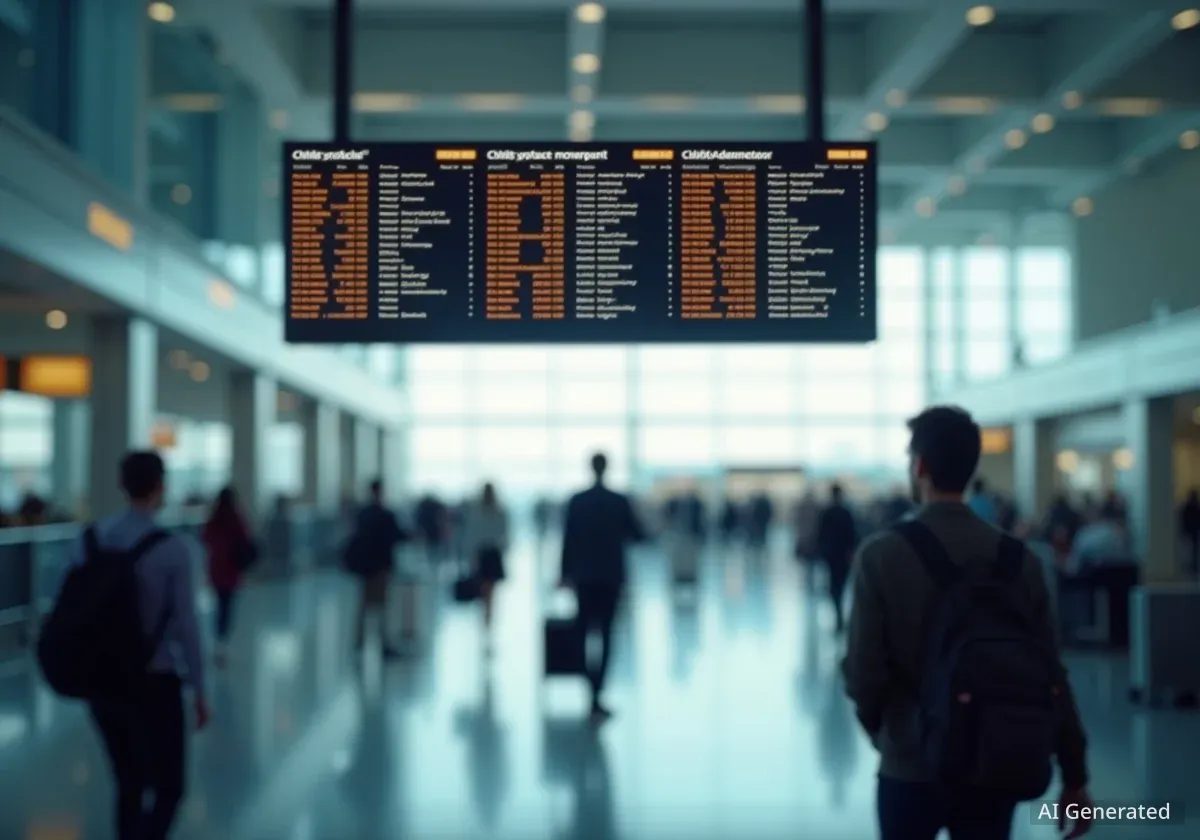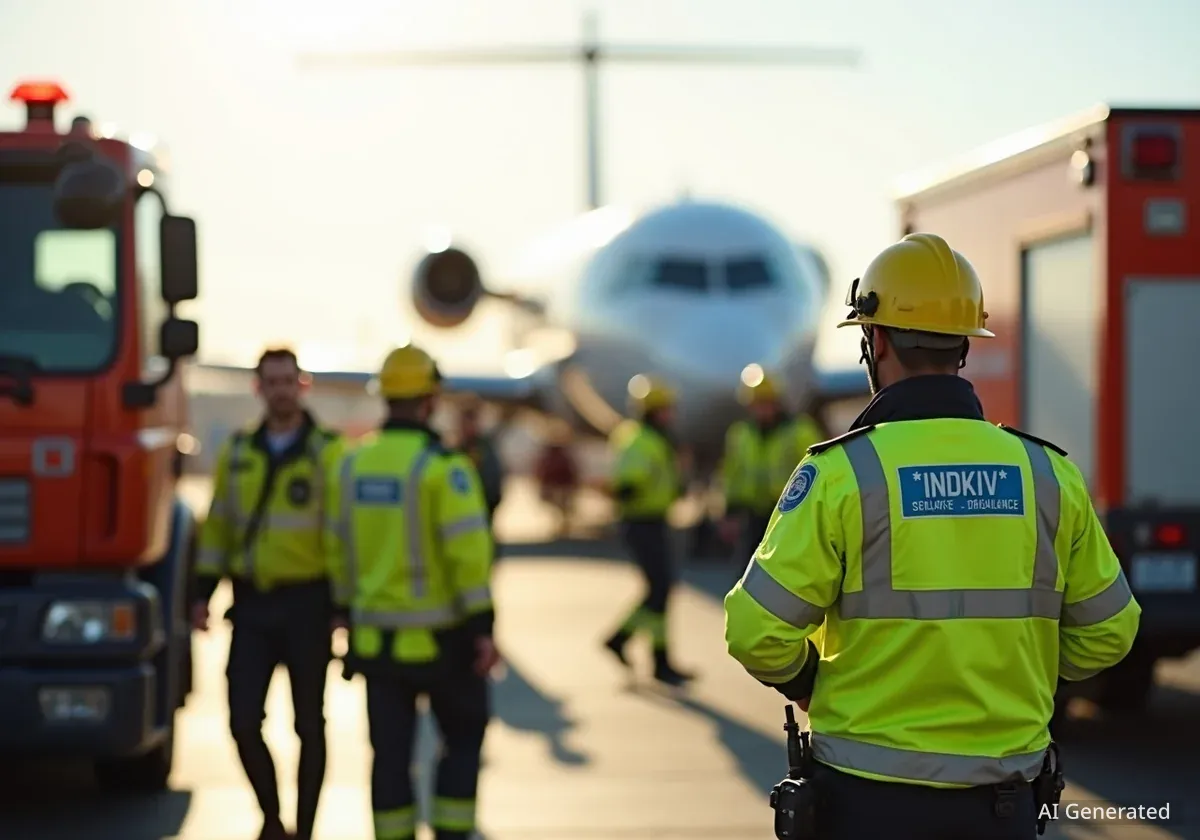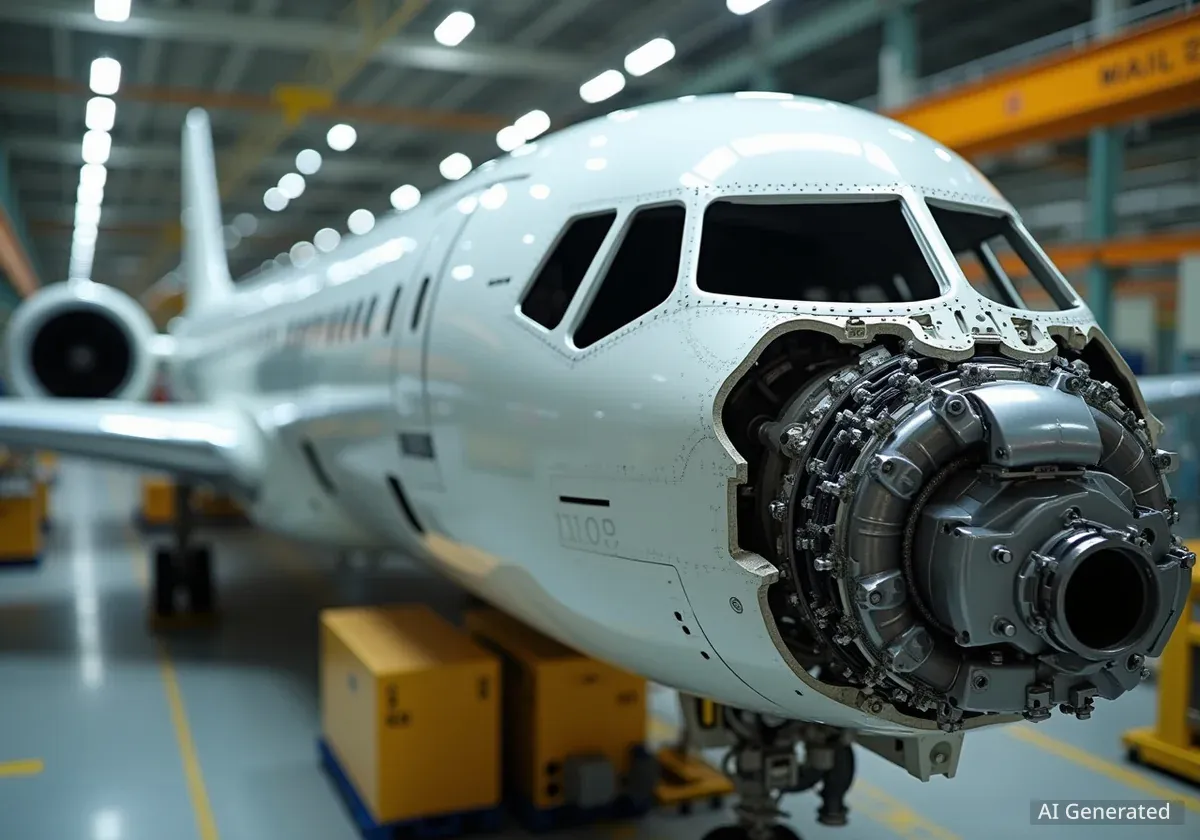The Federal Aviation Administration (FAA) issued a ground stop for all flights at Los Angeles International Airport (LAX) on Sunday, October 12, 2025, following a significant equipment outage. The disruption at one of the world's busiest aviation hubs caused immediate and widespread delays, affecting thousands of travelers.
Officials confirmed the halt in operations was a necessary safety measure while technical teams worked to identify and resolve the issue. The exact nature of the equipment failure was not immediately disclosed, but such events can have cascading effects across the national aviation system.
Key Takeaways
- The FAA implemented a ground stop at Los Angeles International Airport (LAX) on Sunday.
- The cause was cited as an unspecified "equipment outage."
- LAX is one of the busiest airports globally, making the disruption highly significant.
- The ground stop affects all departing flights, leading to extensive delays and potential cancellations.
Details of the Ground Stop at LAX
The operational halt was announced by the FAA as a direct response to a critical equipment failure. A ground stop is a procedure that prevents aircraft from taking off for a specific airport or region. In this case, the order applied to all departures from Los Angeles International, effectively freezing movement on the ground.
While the FAA did not provide immediate details on the specific systems affected, such outages typically involve critical infrastructure. This can include air traffic control communication systems, radar equipment, or data processing networks that are essential for safely managing aircraft.
An official statement from the FAA noted that safety is the agency's top priority. "We have issued a ground stop for flights at LAX due to an equipment outage," the statement read. "Our technicians are working to restore the system as quickly and safely as possible."
What is an FAA Ground Stop?
A ground stop is an air traffic management initiative ordered by the FAA. It requires that aircraft scheduled to depart for a specific airport remain on the ground at their point of origin. This measure is typically used to manage airspace congestion, severe weather, or, as in this case, a critical equipment failure at the destination airport. The goal is to prevent the system from becoming overwhelmed and to ensure the safety of all flights.
Impact on Travelers and Airline Operations
The timing of the outage on a Sunday, a peak travel day, magnified its impact. Thousands of passengers at LAX were left waiting in terminals, facing uncertain departure times. Airlines were forced to delay dozens of flights, with the potential for cancellations growing as the outage continued.
The disruption at a major hub like LAX creates a significant ripple effect across the country and internationally. Flights scheduled to arrive at LAX from other airports were also affected, with some being held at their departure gates or potentially diverted to other Southern California airports.
LAX by the Numbers
Los Angeles International Airport is a critical node in the global aviation network. In pre-pandemic years, it regularly handled over 88 million passengers annually and more than 700,000 aircraft movements. It serves as a major gateway for international travel, particularly to Asia and Latin America.
Passengers took to social media to share their experiences, posting photos of crowded terminals and departure boards filled with delayed flight information. Many travelers expressed frustration over the lack of specific information regarding when flights might resume.
"The domino effect of an outage at an airport like LAX cannot be overstated. A single major hub going offline for even an hour can disrupt flight schedules from New York to Tokyo," explained a retired air traffic controller in a statement to the press.
Understanding Aviation Equipment Failures
Modern air traffic control relies on a complex network of interconnected technologies. A failure in any single component can compromise the safety and efficiency of the entire system, often necessitating a ground stop. While the FAA maintains redundant systems, simultaneous or unexpected failures can still occur.
Potential Causes of Outages
Several types of equipment issues can trigger a ground stop. These can range in severity and complexity:
- Radar System Failures: These systems are essential for controllers to track the position of aircraft in the air.
- Communication Equipment Malfunctions: This includes the systems controllers use to speak directly with pilots.
- Flight Data Processing Systems: Computers that manage flight plans and route information are critical for orderly traffic flow.
- Power Supply Issues: A loss of power to key facilities, without immediate backup, can shut down all operations.
The FAA invests heavily in maintaining and upgrading its infrastructure through the Next Generation Air Transportation System (NextGen) program. However, many legacy systems are still in operation and require continuous maintenance. Investigations into the cause of the LAX outage will likely focus on identifying the point of failure and implementing measures to prevent a recurrence.
According to federal reports, the FAA's technology infrastructure is a mix of state-of-the-art and aging equipment, which presents an ongoing challenge for modernization efforts. Ensuring the reliability of these systems is a constant focus for the agency.
Broader Implications for the National Airspace System
The incident at LAX highlights the interconnected and sensitive nature of the U.S. National Airspace System (NAS). When a major airport like Los Angeles experiences a shutdown, the effects are felt nationwide. Airlines must initiate complex logistical plans to reroute aircraft, reposition crews, and accommodate stranded passengers.
The FAA's Air Traffic Control System Command Center (ATCSCC) in Virginia is responsible for managing the flow of traffic across the entire country. During an event like the LAX outage, the Command Center works to mitigate the broader impact by implementing measures such as ground delay programs or rerouting traffic around the affected area.
This event serves as a reminder of the fragility of complex technological systems and the importance of robust contingency planning. As air travel continues to grow, ensuring the resilience of the underlying infrastructure remains a critical priority for both government agencies and the airline industry. Authorities are expected to provide further updates as they work to resolve the situation and restore normal operations at LAX.





